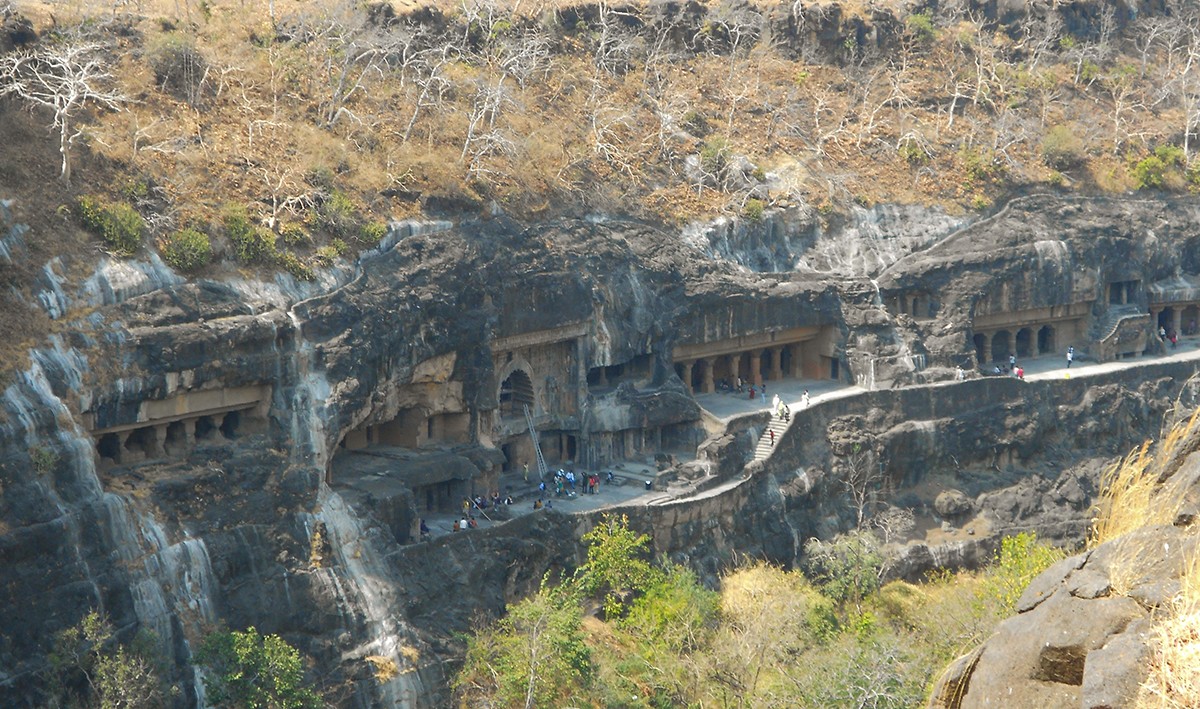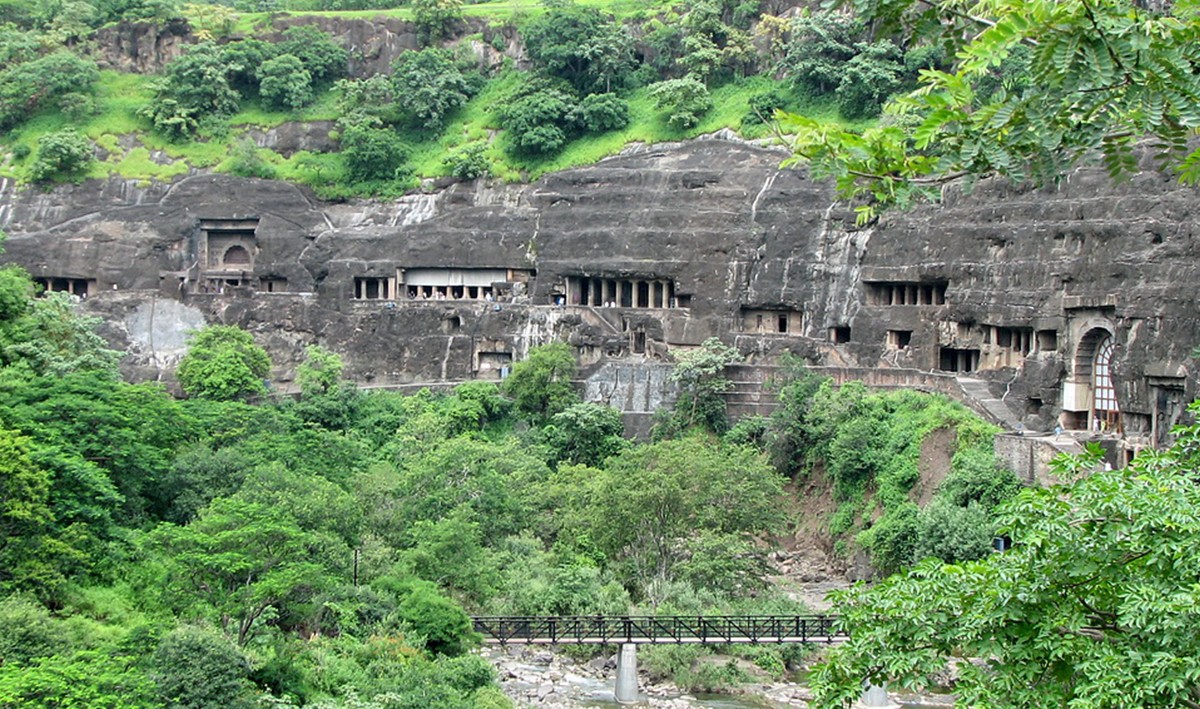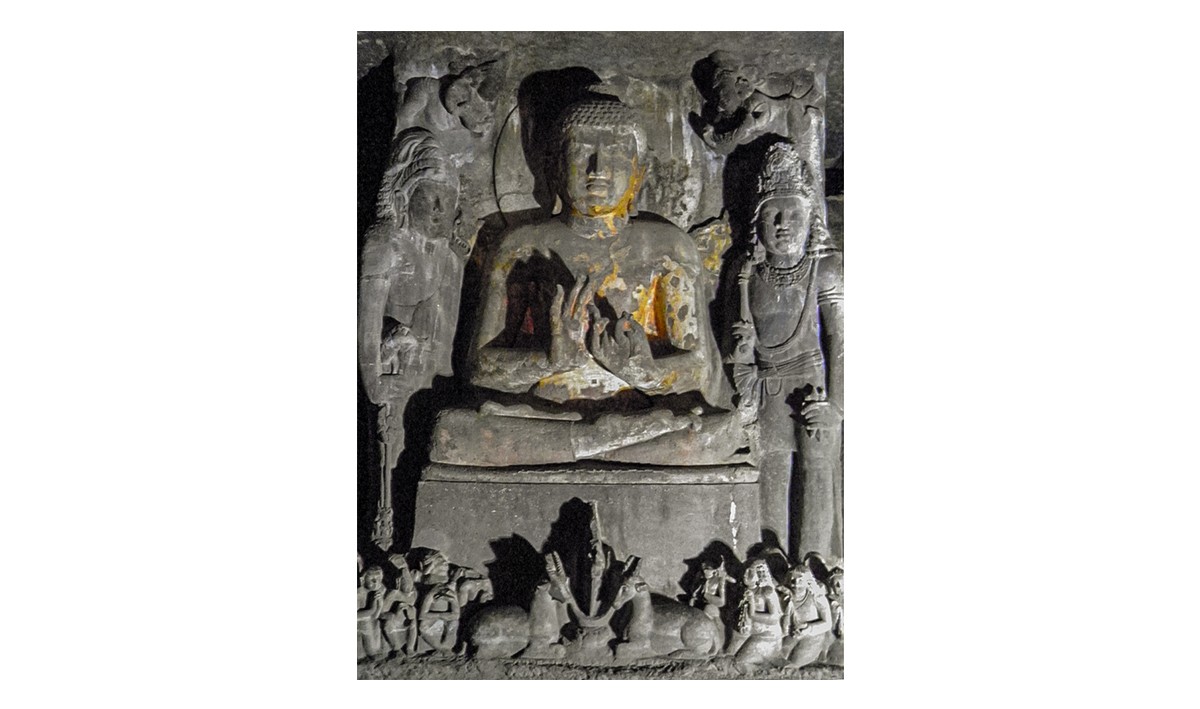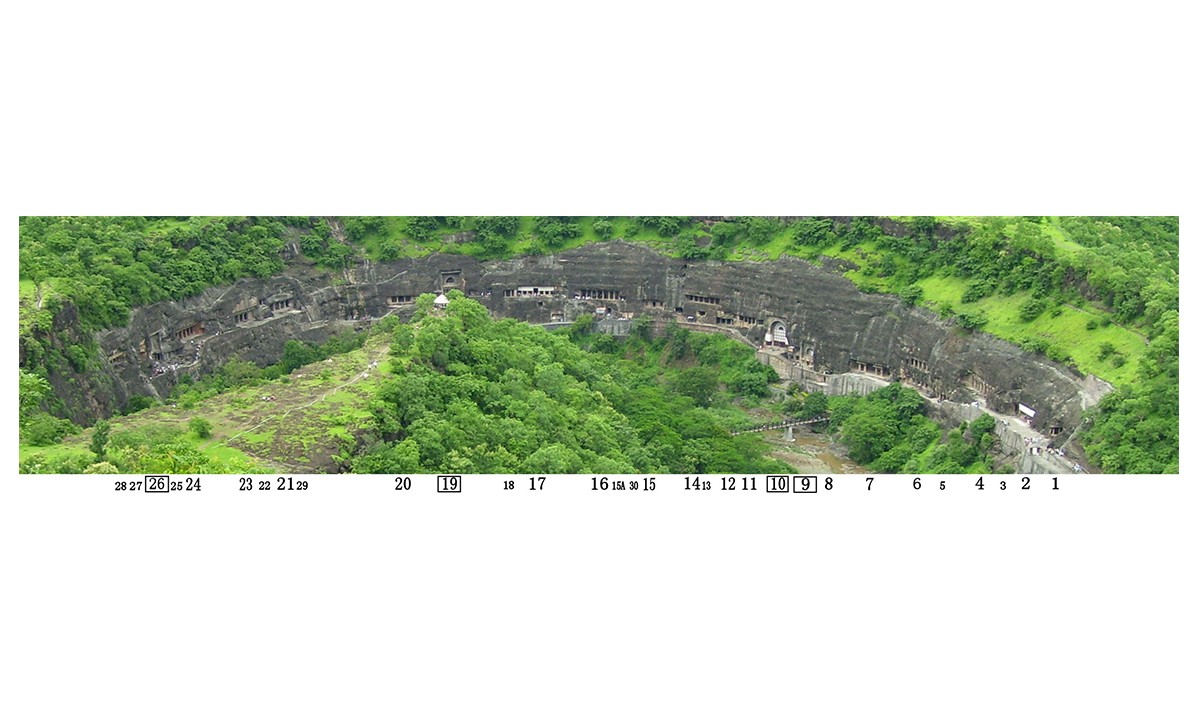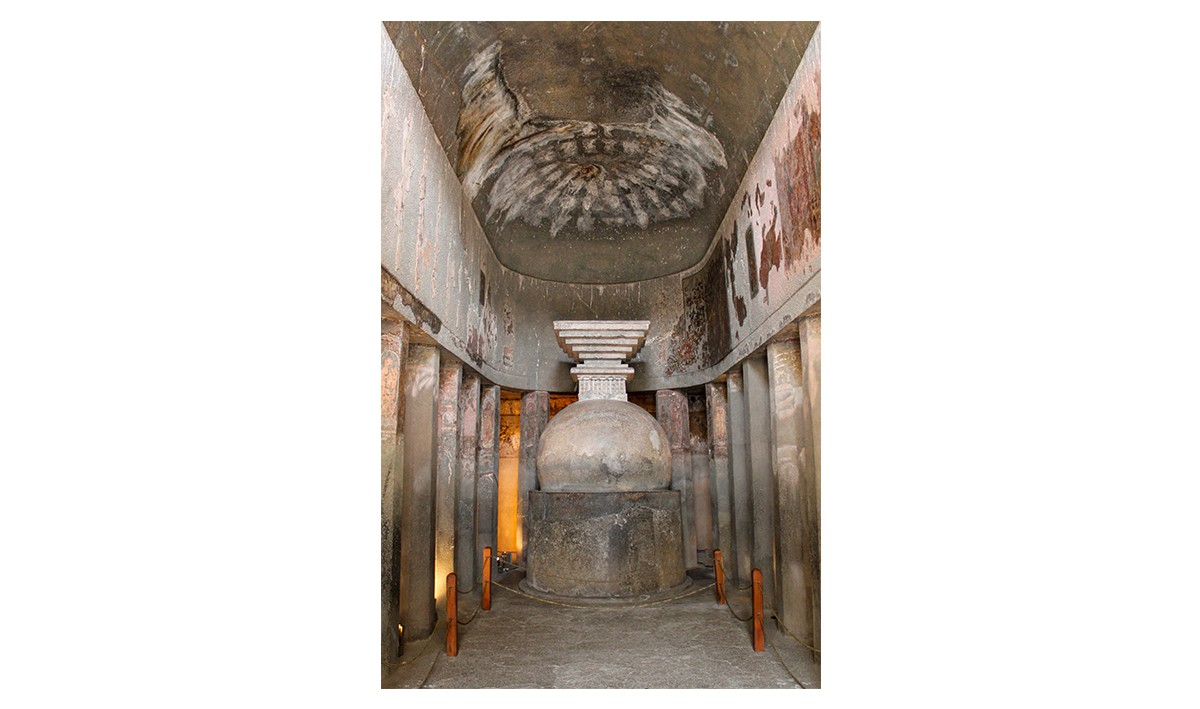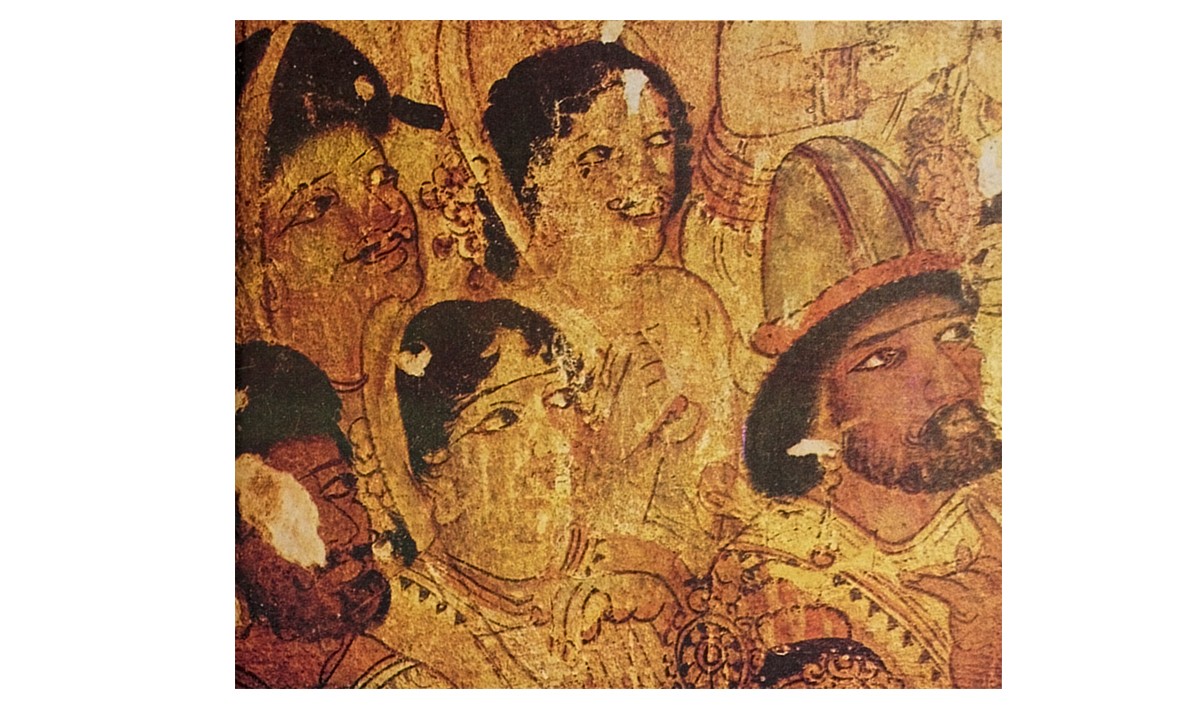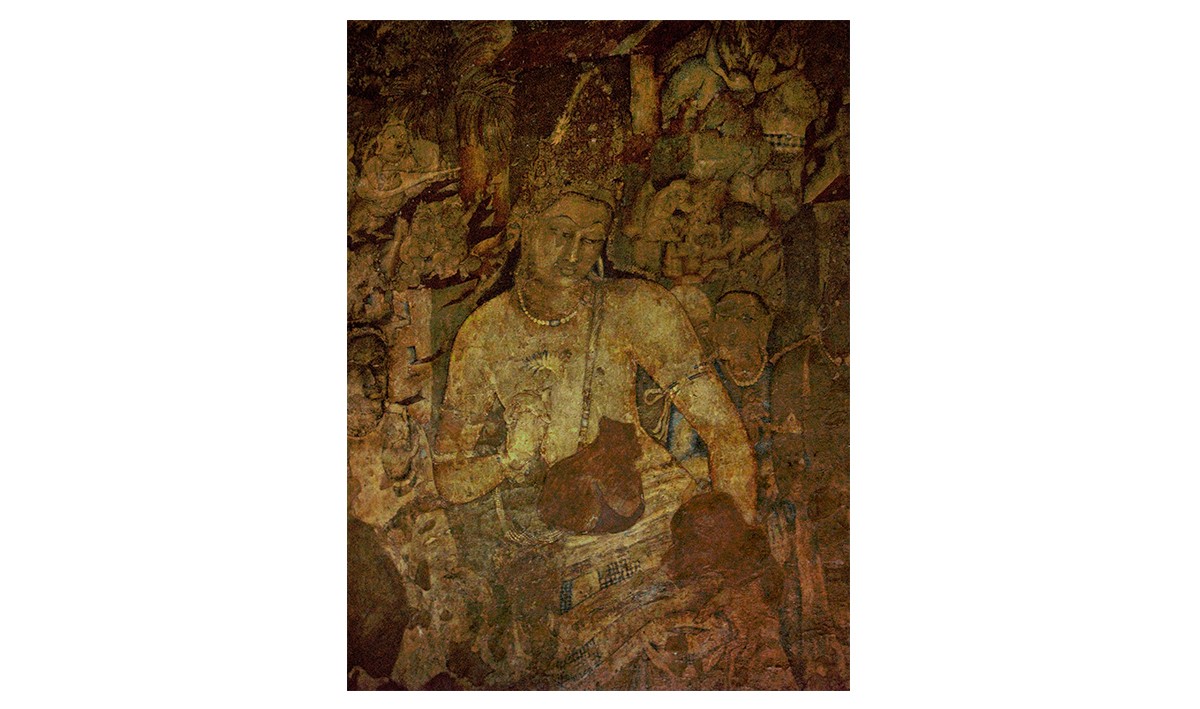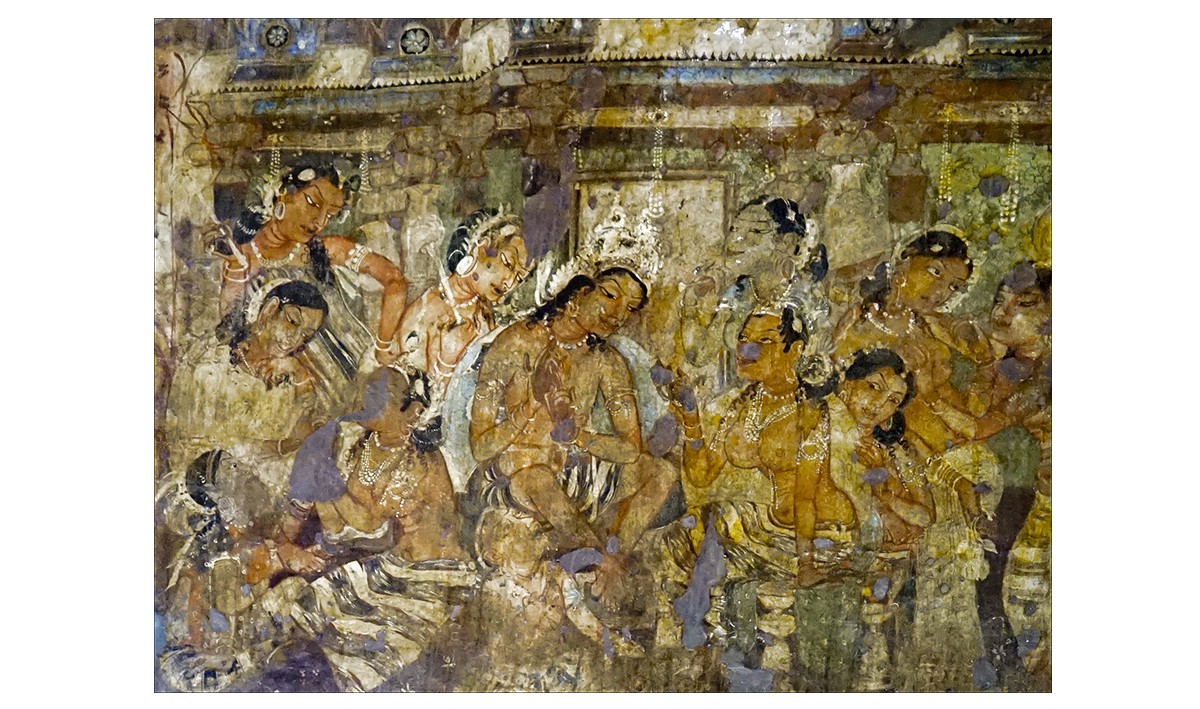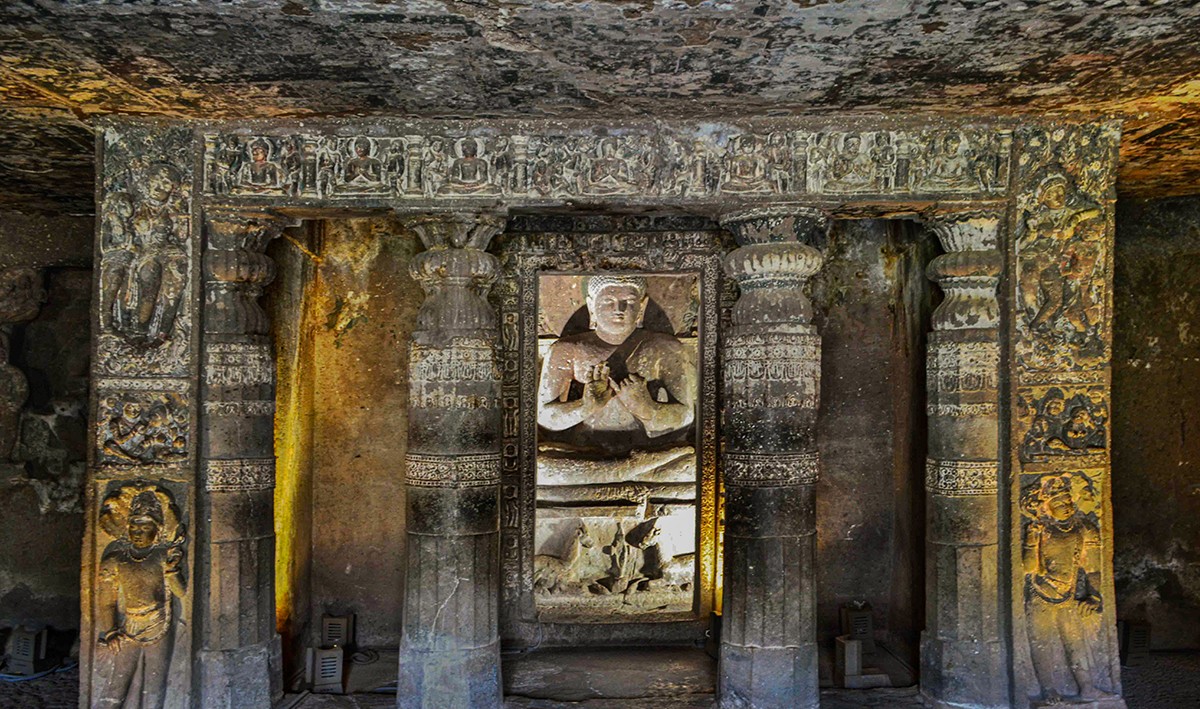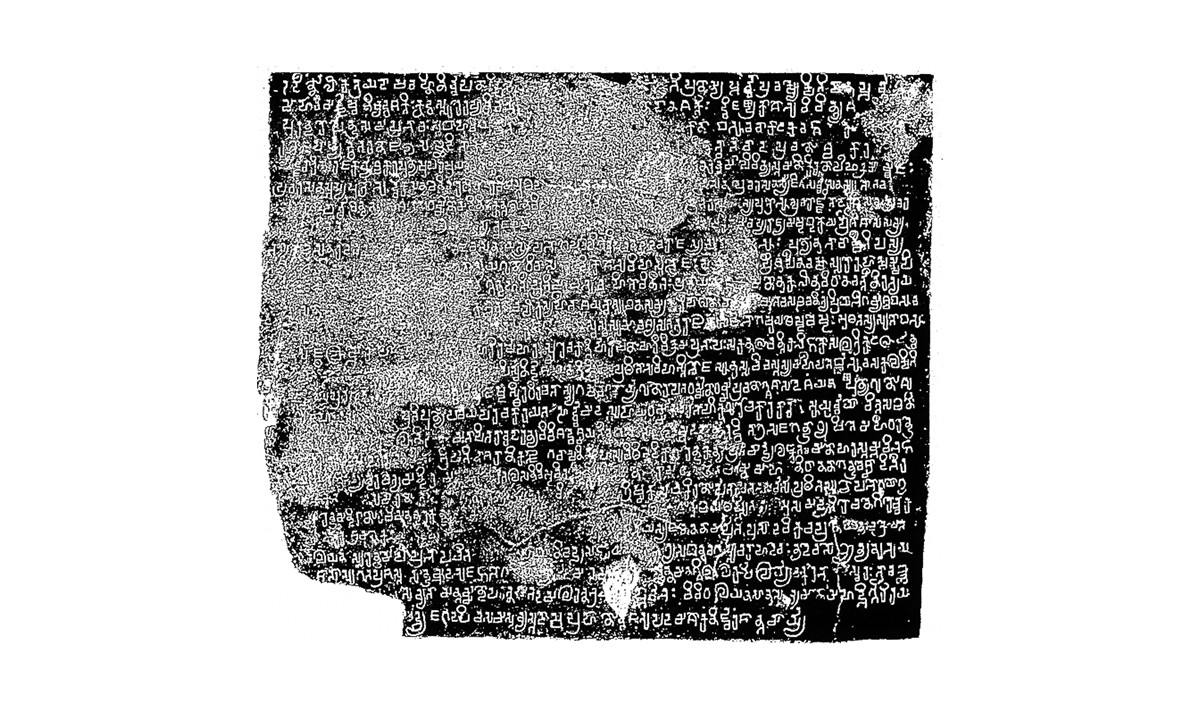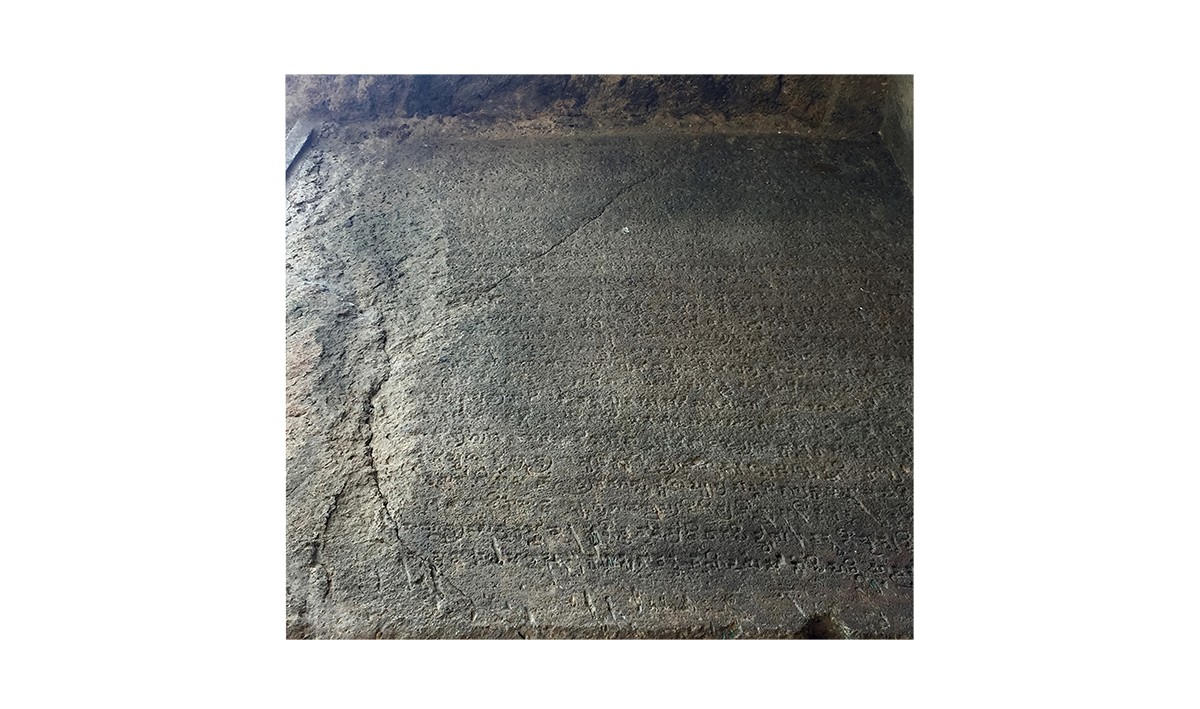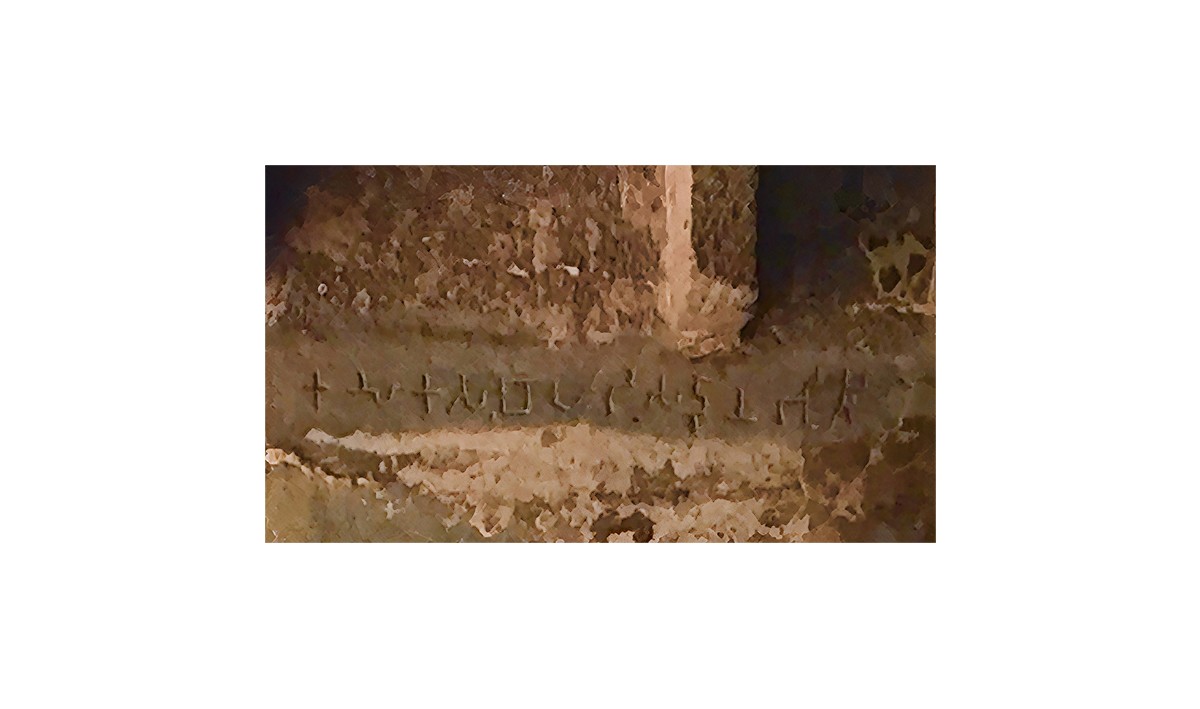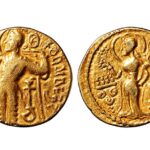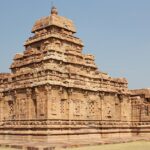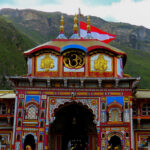The Spread of Sanskrit Cultural Hegemony
480 CE
Under the pressure of internal political crises, and migrating Central Asian peoples such as the Sveta Huna, the Gupta polity begins to disintegrate. In the Deccan, the Vakataka dynasty, previously linked to the Guptas by marriage, patronises North Indian emigre artists as well as local Deccan cave architects through a series of cave excavations at Ajanta (in present-day Maharashtra). These show a highly sophisticated visual aesthetic characterised by naturalism, dynamism and vibrant colour, and a discriminating use of perspective and shading.
The recently developed Gangetic model of kingship — using Sanskrit as a language of power, emphasising the king’s divine connections, constructing and patronising religious institutions linked to Puranic and Dakshinachara (Right-Hand Tantrism) traditions, and the subjugation of other states through war — begins to spread rapidly through the subcontinent.
Bibliography
Bakker, Hans. Monuments of Hope, Gloom and Glory in the Age of the Hunnic Wars: 50 Years that Changed India (484–534). Amsterdam: Royal Netherlands Academy of Arts and Sciences, 2017.
Devi, Deepika, and Wasim Akram. “A Case Study of Tantricism in Early Medieval Kashmir (with Special Reference to Kalhana’s Rājataraṅgiṇī).” Proceedings of the Indian History Congress 80, no. 1 (December 2019): 311–19. https://www.jstor.org/stable/27192886.
Pollock, Sheldon. The Language of the Gods in the World of Men: Sanskrit, Culture, and Power in Premodern India. Berkeley, CA: University of California Press, 2006.
Feedback 
This entry appears in
Art in South Asia
Visit Timeline
Associated Timeline Events
First Published: March 11, 2024
Last Updated: May 20, 2024



